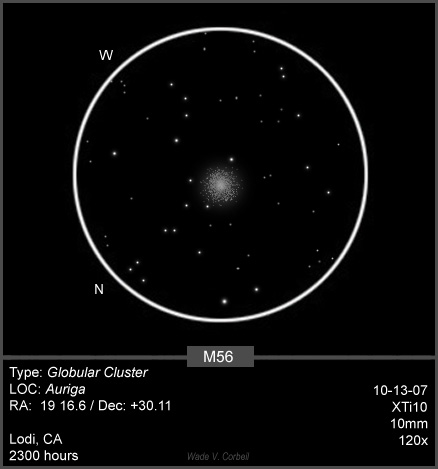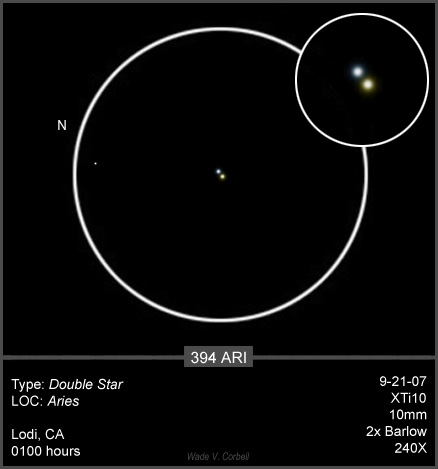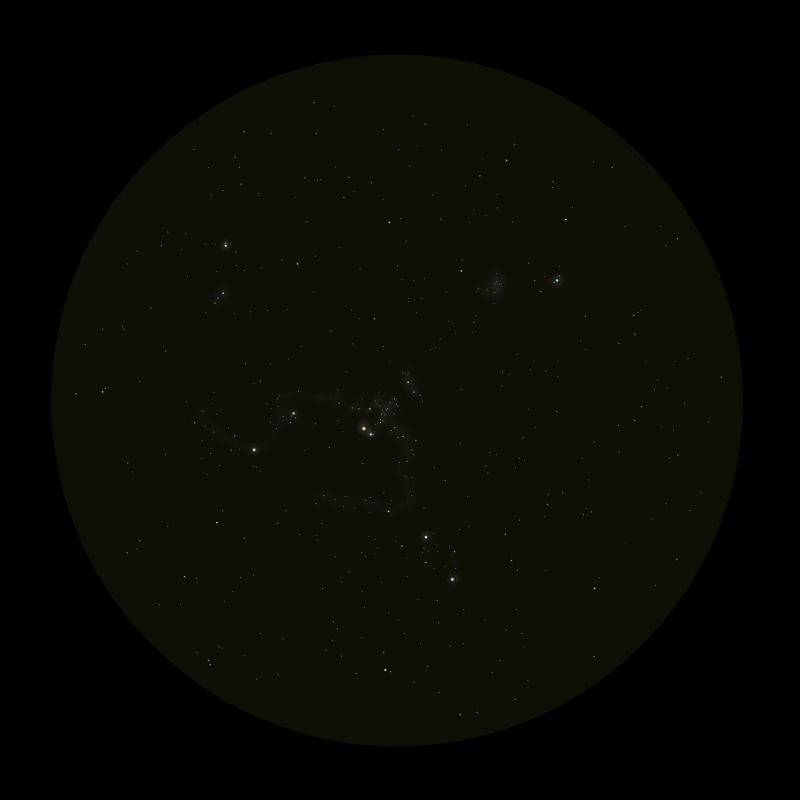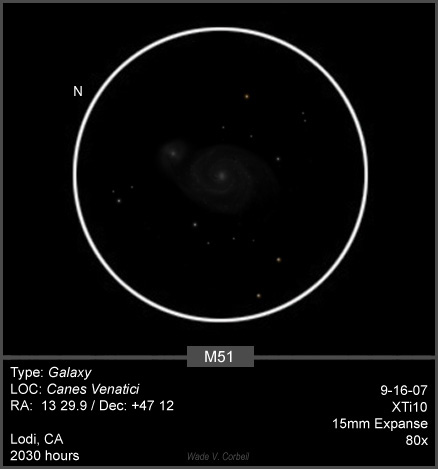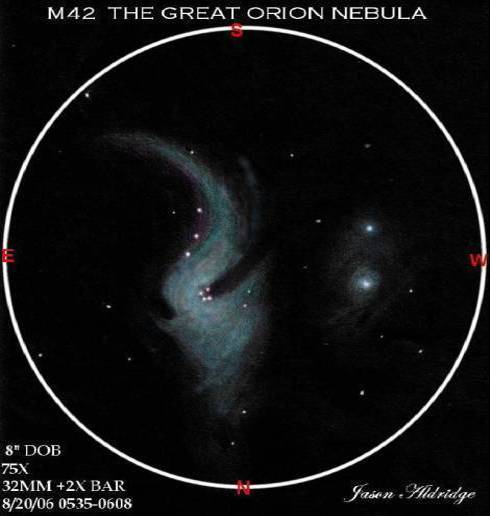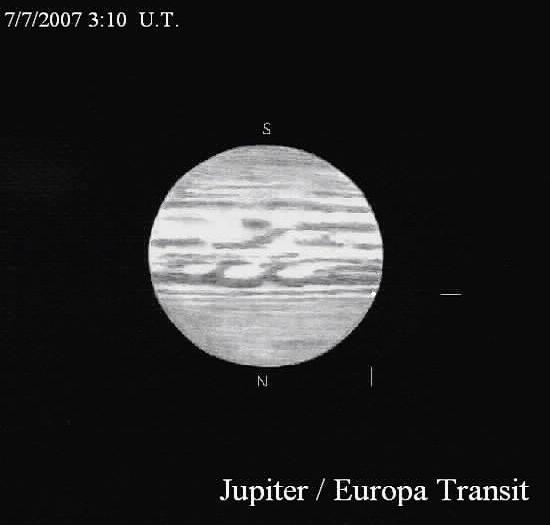Now here is a Globular that struck me as fascinating and odd at the same time. Although the stars resolved quite well, it also appeared very dim for as well as it resolved…strange.
The digital sketch based on my original pencil drawing took a little time to depict accurately. I was either getting it too bright or too dim, and getting to the point of making the digital sketch appear as it looked to me through the EP was a task. I believe I had 5 or 6 dufferent layers with differing opacities and Guassian Blurs applied before I got it to resemble the actual EP view.
This Globular is framed nicely by background stars of varying brightness, and set off this Globular quite nicely. Here is how it appeared to me through the EP, I hope you enjoy it.
Wade V. Corbei

